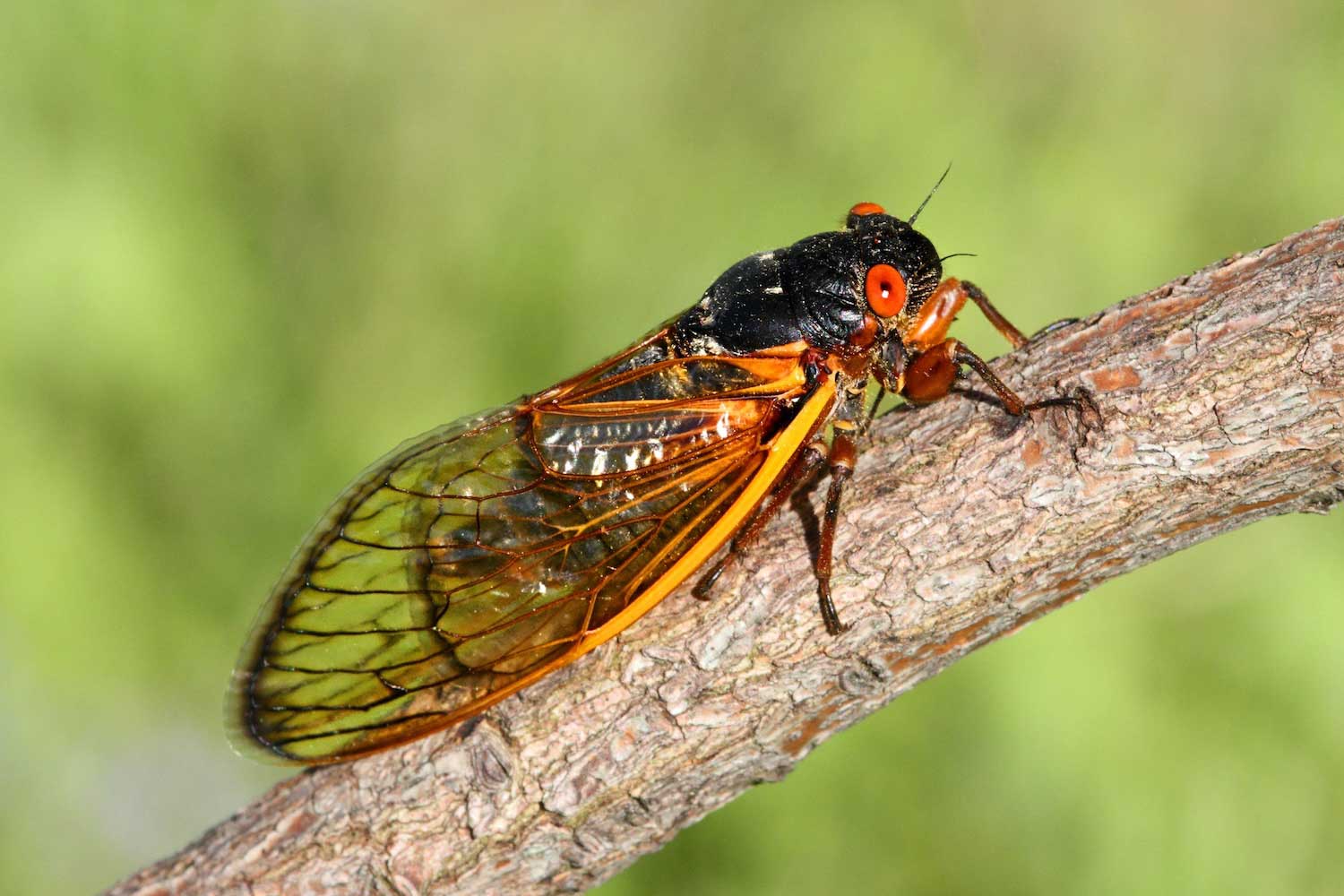Brooding about cicadas? Here's the reason for all the hype this year

To not have heard the buzz about this year's cicada emergence you would have to have been where the cicadas themselves are right now — underground. But why all the hype? Because this year's emergence in Illinois will include two broods of periodical cicadas, and it will be the first time the two broods will have emerged at the same time since 1803, when Thomas Jefferson was president.
Illinois wasn't even a state when these two broods — formally known as Brood XIX and Brood XIII — last emerged together; statehood for Illinois didn't come until 1818. So it's safe to say the co-emergence of these two broods is a once-in-a-lifetime event, even less than that because it only happens every 221 years, according to the Field Museum. That means it won't happen again until 2245.
But we hear cicadas every summer right? So what's the big deal about 2024? Let's break down the fanfare.
Illinois and the eastern United States are home to two kinds of cicadas: annual cicadas and periodical cicadas. Annual cicadas, also called dog-day cicadas, are the ones we see and hear every summer, according to the University of Illinois Extension. Like their periodical counterparts, dog-day cicadas also have life cycles that last multiple years — typically between two to eight years depending on the species — but their life cycles are not synchronized, so some emerge each year rather than all in the same year.
It's the periodical cicadas that grab all the headlines and create all the spectacle — and for good reason. They only emerge every 17 years in northern Illinois, and there are a lot of them. In fact, the cicadas that will be emerging in northern Illinois this year are considered the largest emergence anywhere. And this year, the cicada show in Illinois will be even greater because two broods will be emerging, creating a racket over most of the state.
Although two broods will emerge in Illinois, they won't emerge in the same place except for small pockets in central Illinois where the broods may overlap, according to the Illinois Extension. The lucky ducks who live in those areas could get a double dose of cicadas as both Brood XIII, or the Northern Illinois Brood, and Brood XIX, or the Great Southern Brood emerge this year.
The emergence of the two broods doesn't usually coincide because their life cycles have different durations. The cicadas in the Northern Illinois Brood are 17-year cicadas, while the Great Southern Brood cicadas are 13-year cicadas.
Several species exist of both the 17-year and 13-year cicadas, and the species look and behave similarly. The primary difference between them is the amount of time they spend underground during the nymph stage of their life cycle, according to Scientific American. Cicadas start and end their lives above ground, but they spend almost their entire lives underground as nymphs, so 17-year cicadas spend about 17 years underground while 13-year cicadas spend about 13 years underground.
Why do the cicadas emerge after so many years underground? For one reason and one reason only: to mate. The song we associate with cicadas is how the males attract a mate. The chorus could be louder. Only male cicadas sing. Females do not have tymbals, the structure used to create their song, so they are not able to produce the familiar sound, the Illinois Extension reports.
In Illinois, the song of the periodical cicadas usually begins in late May or early June. Once the symphony begins, it typically lasts about a month, according to the Illinois Extension.
You'd be hard pressed to travel anywhere in the Midwest and even beyond during the emergence and not hear the cicadas, because the ranges of the emerging broods extend beyond Illinois' borders. The range of the Northern Illinois Brood that we will see and hear here in Will County also covers part of eastern Iowa, southern Wisconsin and small pockets of Indiana and Michigan, according to the U.S. Forest Service. The range of the Great Southern Brood includes most of the southern half of Illinois as well as most of Missouri, a large portion of northern Arkansas and smaller pockets of Kentucky, Tennessee, Louisiana, Alabama, Mississippi, Georgia, South Carolina and North Carolina.
There's even a third brood that may be adding to the cicada symphony in Illinois. Brood XXIII, or the Mississippi Valley Brood, will next emerge in 2028, but a small number of cicadas from this brood are expected to emerge this summer as well, the Illinois Extension reports. These cicadas that emerge separate from their usual cycle are called stragglers. The Mississippi Valley Brood includes pockets of southern, east central and central Illinois, so residents in these areas may get a preview of what is in store for them in 2028.
Even though trillions of cicadas are expected to emerge in Illinois, there is no cause for alarm. Cicadas don't bite or sting, and they are generally harmless to plants. The only exception is young trees, which may be vulnerable to large numbers of the insects, the U.S. Environmental Protection Agency reports. Avoid planting trees and shrubs during a cicada emergence. If you have young trees, you can protect them by covering them in netting or mesh with openings that are less than a quarter-inch.

